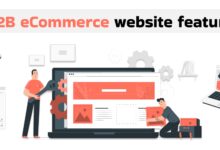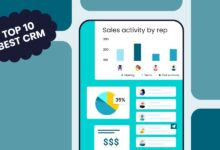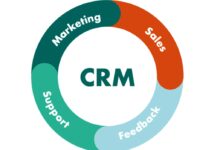B2B Mastery: 7 Powerful Strategies to Skyrocket Your Business Growth
Welcome to the ultimate guide on B2B—where businesses connect, grow, and thrive. If you’ve ever wondered how companies sell to each other, scale operations, or build lasting partnerships, you’re in the right place. Let’s dive deep into the world of B2B with clarity, strategy, and real-world insights.
What Exactly Is B2B? A Clear Definition and Core Principles

The term B2B, or Business-to-Business, refers to transactions and relationships between two businesses rather than between a business and individual consumers. This model is foundational in global commerce, powering supply chains, manufacturing, technology integration, and enterprise services. Unlike B2C (Business-to-Consumer), B2B interactions are typically more complex, involve longer sales cycles, and are driven by logic, ROI, and strategic alignment.
The Evolution of B2B Over the Decades
B2B has undergone a dramatic transformation since the industrial era. Initially rooted in wholesale trade and manufacturing supply lines, B2B evolved with globalization, digitalization, and the internet. The 1990s saw the rise of e-commerce platforms like Alibaba, which revolutionized how businesses sourced goods globally. Today, B2B is increasingly digital-first, with cloud-based procurement, AI-driven sales tools, and data analytics shaping decision-making.
- 1950s–1970s: Physical catalogs and trade shows dominated B2B sales.
- 1980s–1990s: Fax machines and early ERP systems streamlined communication.
- 2000s–2010s: Online marketplaces and CRM tools like Salesforce emerged.
- 2020s: AI, automation, and digital ecosystems define modern B2B.
Key Differences Between B2B and B2C
Understanding the contrast between B2B and B2C is crucial for crafting effective strategies. While both involve selling products or services, the motivations, decision-making processes, and customer journeys differ significantly.
Decision-Making: B2B purchases often involve multiple stakeholders (e.g., procurement, finance, operations), whereas B2C decisions are usually individual.Sales Cycle: B2B sales cycles can last weeks or months; B2C purchases are often immediate.Pricing Models: B2B frequently uses negotiated pricing, volume discounts, and contracts; B2C relies on fixed pricing.Marketing Approach: B2B emphasizes thought leadership, case studies, and ROI; B2C focuses on emotion, branding, and lifestyle.
.”B2B is not just about selling to businesses—it’s about solving their problems at scale.” — Marc Benioff, CEO of Salesforce
The 7 Core Pillars of a Successful B2B Strategy
To thrive in the B2B landscape, companies must build their operations around seven foundational pillars.These are not just tactics but strategic imperatives that shape long-term success.From customer understanding to digital transformation, each pillar plays a critical role in driving growth, efficiency, and competitive advantage..
1. Deep Customer Insight and Persona Development
In B2B, knowing your customer goes beyond demographics. You need to understand their business model, pain points, goals, and decision-making hierarchy. Creating detailed buyer personas helps tailor messaging, product development, and sales approaches.
- Map out key roles: decision-makers, influencers, end-users.
- Conduct interviews and surveys with existing clients.
- Use CRM data to identify patterns in purchasing behavior.
For example, a SaaS company selling project management tools might target CTOs, IT managers, and team leads—each requiring a different value proposition. Resources like Gartner’s research on B2B buyer personas provide actionable frameworks for this process.
2. Value-Based Selling Over Feature Dumping
One of the biggest mistakes in B2B is focusing too much on product features rather than business outcomes. Value-based selling shifts the conversation from “what it does” to “how it helps your business.” This approach aligns your solution with the client’s KPIs—whether it’s reducing costs, increasing efficiency, or improving customer retention.
- Quantify ROI in proposals and demos.
- Use case studies to demonstrate real-world impact.
- Train sales teams to ask consultative questions.
Companies like HubSpot have mastered this by offering free tools and educational content that help prospects see value before committing.
3. Building Trust Through Thought Leadership
Trust is the currency of B2B. Because deals are high-stakes and long-term, buyers seek vendors they can rely on. Thought leadership—through blogs, whitepapers, webinars, and speaking engagements—positions your brand as an expert, not just a vendor.
- Publish in-depth industry reports.
- Host expert panels or roundtables.
- Contribute to platforms like LinkedIn or Medium with insightful content.
According to Edelman’s Trust Barometer, 81% of B2B buyers say trust is a deciding factor in vendor selection.
4. Leveraging Data and Analytics for Decision-Making
In the digital age, B2B companies that harness data gain a significant edge. From tracking customer engagement to predicting churn, analytics inform every stage of the buyer journey. Tools like Google Analytics, Mixpanel, and CRM integrations enable real-time insights.
- Monitor website behavior to identify high-intent leads.
- Use predictive analytics to forecast sales trends.
- Analyze customer feedback for product improvement.
Data-driven companies are 23 times more likely to acquire customers, according to McKinsey.
5. Seamless Digital Experience Across Touchpoints
Today’s B2B buyers expect a B2C-like experience: intuitive websites, fast response times, and self-service options. A clunky website or slow support can cost you a deal. Investing in UX, chatbots, and knowledge bases improves conversion and retention.
- Optimize your website for mobile and speed.
- Offer live chat with real agents during business hours.
- Provide downloadable resources without excessive form fields.
For inspiration, check out Shopify’s B2B platform, which blends e-commerce ease with enterprise functionality.
6. Strategic Partnerships and Ecosystem Development
No B2B company operates in isolation. Strategic partnerships—whether with complementary tech providers, distributors, or consultants—expand reach and enhance offerings. Ecosystems like Salesforce AppExchange or Microsoft Azure Marketplace allow vendors to integrate and co-sell.
- Identify partners with aligned customer bases.
- Create co-marketing campaigns and joint webinars.
- Develop API integrations for seamless workflows.
These alliances not only drive revenue but also build credibility through association.
7. Continuous Innovation and Adaptability
The B2B landscape is constantly shifting due to technological advances, regulatory changes, and market disruptions. Companies that innovate—whether through product upgrades, service models, or customer engagement—stay ahead of the curve.
- Invest in R&D and customer feedback loops.
- Adopt agile methodologies for faster iteration.
- Monitor industry trends via reports from Forrester or IDC.
Adobe’s transition from boxed software to a cloud-based subscription model is a prime example of B2B innovation that paid off.
How B2B Sales Cycles Work: From Lead to Close
The B2B sales cycle is a structured process that moves a prospect from awareness to purchase. Unlike B2C, where impulse buying is common, B2B sales require nurturing, education, and relationship-building. Understanding each stage helps sales and marketing teams align their efforts effectively.
Stage 1: Awareness and Lead Generation
This is where prospects realize they have a problem that needs solving. Your job is to be visible when they start searching. Tactics include SEO, content marketing, paid ads, and social media.
- Create blog posts targeting common industry challenges.
- Run LinkedIn ad campaigns targeting specific job titles.
- Offer free tools or assessments to capture leads.
For example, a cybersecurity firm might publish a guide on “Top 5 Threats Facing Financial Institutions” to attract CISOs.
Stage 2: Consideration and Engagement
At this point, the prospect is evaluating solutions. They may compare vendors, request demos, or read reviews. Your content should focus on differentiation and credibility.
- Send personalized email sequences based on behavior.
- Provide case studies and testimonials.
- Host live product demos with Q&A sessions.
Tools like HubSpot Sales Hub help automate and track these interactions.
Stage 3: Decision and Negotiation
The prospect is ready to buy but may need final approvals or contract negotiations. This stage often involves legal, finance, and procurement teams.
- Provide clear pricing models and SLAs.
- Offer pilot programs or proof-of-concept trials.
- Be responsive to requests for revisions or clarifications.
Transparency and flexibility here can make or break the deal.
Stage 4: Closure and Onboarding
Closing the sale is not the end—it’s the beginning of the customer lifecycle. Effective onboarding ensures the client achieves value quickly, reducing churn risk.
- Assign a dedicated onboarding specialist.
- Provide training sessions and documentation.
- Schedule regular check-ins during the first 90 days.
Companies like ZoomInfo excel in this area by offering personalized setup and integration support.
B2B Marketing: Strategies That Actually Drive Results
B2B marketing is not about flashy ads or viral trends—it’s about building relationships, demonstrating expertise, and guiding buyers through a complex journey. The most effective B2B marketing strategies are strategic, data-backed, and customer-centric.
Content Marketing: The Backbone of B2B Growth
High-quality content establishes authority and nurtures leads over time. Unlike B2C, B2B buyers consume detailed, educational content before making decisions.
- Write whitepapers, e-books, and industry reports.
- Produce video explainers and customer success stories.
- Optimize content for SEO with keywords like ‘b2b marketing trends’ or ‘enterprise software solutions’.
According to Demand Gen Report, 96% of B2B buyers want content that helps them make informed decisions.
Email Marketing: Precision Over Volume
Email remains one of the highest ROI channels in B2B. However, success depends on segmentation, personalization, and timing.
- Segment lists by industry, company size, or behavior.
- Use dynamic content to tailor messages.
- A/B test subject lines and CTAs for optimization.
Tools like Mailchimp and ActiveCampaign offer robust automation for B2B email workflows.
Account-Based Marketing (ABM): Targeting High-Value Accounts
ABM flips traditional marketing by focusing on specific accounts rather than broad audiences. It’s ideal for enterprise sales where a single client can represent significant revenue.
- Identify target accounts with high potential.
- Create personalized campaigns across channels.
- Align sales and marketing teams on goals and messaging.
Forrester reports that companies using ABM see 200% higher win rates on targeted accounts.
The Role of Technology in Modern B2B Operations
Technology is the engine of modern B2B. From CRM systems to AI-powered analytics, digital tools enable scalability, efficiency, and deeper customer insights. Companies that embrace technology gain a competitive edge in speed, accuracy, and customer experience.
CRM Systems: Centralizing Customer Relationships
A Customer Relationship Management (CRM) system is the backbone of any B2B operation. It tracks interactions, manages pipelines, and provides visibility across teams.
- Salesforce, HubSpot, and Zoho are leading CRM platforms.
- Integrate CRM with email, calendar, and support tools.
- Use automation to log activities and send follow-ups.
According to Nucleus Research, every $1 invested in CRM returns $8.71 in profit.
Marketing Automation: Scaling Engagement
Manual outreach doesn’t scale in B2B. Marketing automation tools help deliver the right message to the right person at the right time.
- Trigger emails based on website visits or content downloads.
- Nurture leads with drip campaigns.
- Score leads based on engagement to prioritize sales efforts.
Marketo and Pardot are powerful platforms for B2B automation.
AI and Machine Learning: The Future of B2B Intelligence
AI is transforming B2B by enabling predictive analytics, chatbots, and personalized recommendations. Machine learning models can forecast customer behavior, optimize pricing, and even draft sales emails.
- Use AI chatbots for 24/7 lead qualification.
- Implement predictive lead scoring to improve conversion.
- Leverage natural language processing for sentiment analysis.
IBM’s Watson is used by B2B companies to analyze customer data and recommend next-best actions.
B2B E-Commerce: The Digital Transformation of Business Sales
B2B e-commerce is no longer optional—it’s essential. With 73% of B2B buyers preferring to buy online (McKinsey), companies must offer seamless digital purchasing experiences. This shift has been accelerated by the pandemic and the rise of digital-native buyers.
Key Features of a Successful B2B E-Commerce Platform
Unlike B2C sites, B2B e-commerce platforms must support complex requirements like bulk ordering, custom pricing, and multi-user accounts.
- Role-based access for different team members.
- Integration with ERP and inventory systems.
- Support for purchase orders and invoicing.
Platforms like Magento B2B and BigCommerce offer enterprise-grade solutions tailored for business buyers.
Overcoming Challenges in B2B Online Sales
Despite its growth, B2B e-commerce faces hurdles such as legacy systems, resistance to change, and lack of digital skills.
- Start with a pilot program for a specific product line.
- Train sales teams to support digital adoption.
- Ensure mobile compatibility and fast load times.
Case in point: Grainger, a leading industrial supplier, increased online sales by 40% after revamping its digital platform.
The Future of B2B Marketplaces
Dedicated B2B marketplaces like Alibaba, ThomasNet, and Amazon Business are becoming go-to destinations for procurement. These platforms offer convenience, competitive pricing, and vast product catalogs.
- List your products on relevant marketplaces to expand reach.
- Optimize product listings with detailed specs and high-quality images.
- Monitor reviews and respond to feedback promptly.
Selling on Amazon Business can open doors to millions of business buyers worldwide.
Measuring B2B Success: Key Metrics and KPIs
You can’t improve what you don’t measure. In B2B, tracking the right metrics helps you understand performance, optimize strategies, and forecast growth. These KPIs span sales, marketing, customer success, and financial health.
Sales Metrics: Pipeline Health and Conversion Rates
Monitoring your sales pipeline reveals bottlenecks and opportunities.
- Lead-to-customer conversion rate.
- Average deal size and sales cycle length.
- Pipeline velocity (how quickly deals move through stages).
A healthy pipeline should have a 3:1 ratio of potential deal value to quota.
Marketing Metrics: ROI and Lead Quality
Marketing must prove its contribution to revenue.
- Cost per lead (CPL) and customer acquisition cost (CAC).
- Marketing-qualified lead (MQL) to sales-qualified lead (SQL) conversion.
- Content engagement (downloads, time on page, shares).
According to HubSpot, companies that track marketing ROI grow 2x faster.
Customer Success Metrics: Retention and Expansion
Acquiring a customer is just the beginning. Retention and expansion drive long-term profitability.
- Customer churn rate and net retention rate.
- Net Promoter Score (NPS) and customer satisfaction (CSAT).
- Expansion revenue from upsells and cross-sells.
For SaaS companies, a net retention rate above 100% indicates strong customer loyalty and growth.
What is B2B and how does it differ from B2C?
B2B, or Business-to-Business, refers to transactions between companies, such as a software firm selling to a bank. It differs from B2C (Business-to-Consumer) in that B2B involves longer sales cycles, multiple decision-makers, and a focus on ROI and business value rather than emotional appeal.
What are the most effective B2B marketing strategies?
The most effective B2B marketing strategies include content marketing, account-based marketing (ABM), email nurturing, and thought leadership. These approaches focus on building trust, delivering value, and guiding high-intent buyers through a complex decision-making process.
How important is technology in B2B operations?
Technology is critical in modern B2B operations. CRM systems, marketing automation, AI, and e-commerce platforms enable companies to scale, personalize interactions, and make data-driven decisions. Businesses that leverage technology effectively gain a significant competitive advantage.
What are common challenges in B2B sales?
Common challenges include long sales cycles, multiple stakeholders, complex pricing negotiations, and proving ROI. Overcoming these requires consultative selling, clear communication, and strong post-sale support.
How can a company improve its B2B customer experience?
Improving B2B customer experience involves offering seamless digital interactions, providing proactive support, ensuring smooth onboarding, and continuously delivering value. Personalization, responsiveness, and reliability are key to building long-term relationships.
Mastering B2B is not about quick wins—it’s about building sustainable, value-driven relationships. From understanding your buyer’s journey to leveraging technology and measuring performance, every element plays a role in long-term success. The companies that thrive in B2B are those that prioritize trust, innovation, and customer-centricity. By applying the strategies outlined in this guide, you’re well on your way to transforming your B2B operations and achieving scalable growth.
Further Reading:





